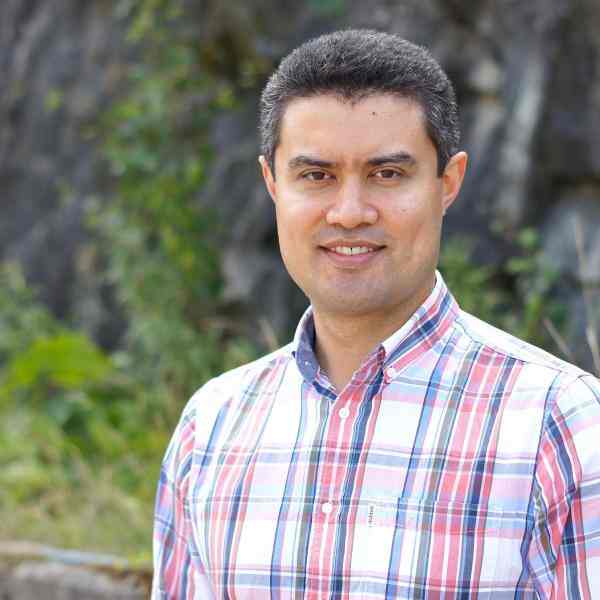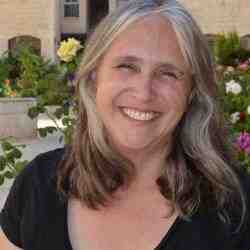Rustam’s ultimate aim is for no child to die unnecessarily from preventable diseases. He founded Shifo with a mission to use the power of data and technology to drive improvements in health care delivery, accountability, and transparency. Shifo’s approach is to unite and create trustworthy relationships between key actors to solve the gaps that stop us from reaching every child, including families, health workers, local and national decision-makers, global NGO:s and foundations. In order to reach this aim, Rustam’s strategy is built on three parts: Firstly, Shifo is designing the tools, systems and structures needed to make preventive healthcare accessible to all. Secondly, Rustam wants to create a behavioral change towards a wider use of eHealth tools and digital systems by demonstrating concrete benefits to these key stakeholders. Lastly, Shifo takes the role as a data broker in the wider health community to promote data transparency.
At the center of Shifo’s work is MyChild System which helpful features designed with and for nurses, drive uptake of the tools by nurses and doctors alike. It currently takes two forms: the MyChild System, a digital tool, and the MyChild Card, a physical paper based health record
booklet, which uploads each child’s health record to the same secure system for digitalization through a scanner. Since most regional hospitals are equipped with the infrastructure required for the system to work (such as electricity, computers and security), these places are used as collection
hubs for the cards. Because it does not rely on electricity or network coverage during care delivery, MyChild Card can be implemented in rural settings, in areas without power supply, or in uncertain security environments. This solution makes it possible to not only reach the “last fifth”, but also
empowers families to take more responsibility for their child’s health care as the booklet includes educational material and the system itself allow for more time spent between the nurse and family to learn about their child’s development. In case the family loses the card booklet, a new one can easily be replaced through the unique ID-number holding access to the history of each child’s medical status. An SMS system is also integrated to alert mothers and families about upcoming clinic visits that seek to promote a higher turn-up rate. During each health check, the nurse registers any allergies, HIV status, growth chart, and vaccines or vitamin doses given to the child. The idea is that MyChild generates not only indicators on the number of children missing their vaccines, but also on the reasons why they are missing them. To date, the system gathers 63 other types of indicators, to show the gaps and guide actions to close them. It is also designed to send updated lists to the nurses, village health teams in centers and the outreach areas, notifying them which children in their area need to visit the center for follow up vaccinations.
Another key element of Rustam’s strategy is to drive behavioral change on two levels. First and foremost, he seeks to trigger a higher demand for eHealth solutions among health workers and professionals in low-income countries at large, while laying the foundation for integrating the system to other digital record keeping systems once a nation’s health system is ready for it. MyChild doesn’t aspire to be the most complex or cutting-edge technology, but has been built for and by local health workers and professionals from the very start in order to make it as flexible and effective as possible for end-users. In order to use the MyChild System however, nurses undergo required IT-training and are certified users. For most nurses, it is their first time using a computer or tablet, but Rustam has found that old and young alike are eager to get online, and see this as an exciting and beneficial personal learning opportunity. Even for areas using the MyChild Card, which does not require the same training, Rustam believes the health workers gain better understanding and acceptance for digital eHealth tools when indirectly exposed to the benefits from digitalisation. On the other hand, Rustam wants to encourage a higher supply and smarter usage of reliable health data. To further promote effectiveness and accountability on a decision-making level, MyChild sends report to the local government and policy makers to identify problems in the local health service chain: vaccination rates, nutrition status, stock outs, unavailable nurses or failed outreach for example. This enables them to directly identify the gaps in health service delivery, improve coordination and workflow, and empower field partners to improve effectiveness and reach of health services delivered to its citizens. This feedback also enables local health care workers to identify gaps in their daily health service delivery and thus catalyze a culture of local problem solving.
The final part of Shifo’s strategy is to become a data broker to convince the global community and partners that the identified gaps are significant and relevant – as well as delivering the means to fill these gaps. Rustam has seen there is potential for some push-back against his system, as its level of
accuracy and transparency is highlighting entrenched problems which the existing system cannot mask. For example, MyChild is exposing that actual vaccination completion rates are much lower than WHO estimates. Rustam’s careful messaging makes it clear that it is only total transparency that will best serve the health system. There are also challenges that local health centers will not be
able to solve in isolation. Rustam is already working with reputable civil society organizations, development cooperation partners and funding agencies in creating an eco-system of players in the field that work towards the same goals – covering the gaps in the public health care chain.
Shifo’s business model is based on a gradual country co-financing model for sustainability and exit strategy, where the costs for implementing and operating MyChild are divided between Shifo, NGO:s and local governments. In order to secure sustainability and longevity, Rustam is implementing incremental handovers of the model and platform to local governments and health providers over a 6-years period. Rustam believes this will be sufficient time to ensure the system is self-sustained in both operations and maintenance by local health services and governments, by proving the overall cost-savings of this model compared to the current fragmented and inefficient monitoring systems carried out by health ministries. All in all Shifo finance 25% of the total cost for implementing and operating MyChild over this initial 6-year period. They intend to cover the costs through a combination of building strategic business partnerships and securing financial support from development collaboration partners, crowd funding, philanthropists and angel investors.
To enable the spread of Shifo’s model to 25 countries by 2020, they are currently building a coalition of organizations and corporate partners. Rustam is involving them by demonstrating how data-driven and effective healthcare ties into their current priorities. Respected NGOs have already committed to co-financing the external funding required for rolling of MyChild to new geographies, with PLAN highlighting Shifo as best practice and a priority for all its international offices and ActionAid planning to lead its rollout in Gambia. The Swedish Committee for Afghanistan plays the same role in Afghanistan – which is seen as a gateway to Pakistan and India. The value for these NGO’s is to accelerate achievement of UN 2030 Sustainable Development (SDG) Goals, to access reliable data for monitoring the process of their intervention and assess their investments using transparent data. To keep up with the pace set out by the new SDG:s, with the goal to end all preventative deaths among children aged 0-5, Rustam’s ambition is to reach out to 1 billion children by 2030.
Read less


